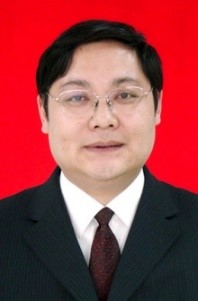Keynote speaker
Prof. Sam Kwong, City University of Hong Kong, China

Title:
Intelligent Video Coding by Data-driven Techniques and Learning Models
Abstract:
In June 6th 2016, Cisco released the White paper[1], VNI Forecast and Methodology 2015-2020, reported that 82 percent of Internet traffic will come from video applications such as video surveillance, content delivery network, so on by 2020. It also reported that Internet video surveillance traffic nearly doubled, Virtual reality traffic quadrupled, TV grew 50 percent and similar increases for other applications in 2015. The annual global traffic will first time exceed the zettabyte(ZB;1000 exabytes[EB]) threshold in 2016, and will reach 2.3 ZB by 2020. It implies that 1.886ZB belongs to video data. Thus, in order to relieve the burden on video storage, streaming and other video services, researchers from the video community have developed a series of video coding standards. Among them, the most up-to-date is the High Efficiency Video Coding(HEVC) or H.266 standard, which has successfully halved the coding bits of its predecessor, H.264/AVC, without significant increase in perceived distortion. With the rapid growth of network transmission capacity, enjoying high definition video applications anytime and anywhere with mobile display terminals will be a desirable feature in the near future. Due to the lack of hardware computing power and limited bandwidth, lower complexity and higher compression efficiency video coding scheme are still desired. For higher video compression performance, the key optimization problems, mainly decision making and resource allocation problem, shall be solved. In this talk, I will present the most recent research and new developments on deep neural network based video coding and its applications such as saliency detection, perceptual visual processing and others. This is very different from the traditional approaches in video coding. We hope applying these intelligent techniques to vide coding could allow us to go further and have more choices in trading off between cost and resources.
Brief Biography:
Sam Kwong received his B.Sc. degree from the State University of New York at Buffalo, M.A.Sc. in
electrical engineering from the University of Waterloo in Canada, and Ph.D. from Fernuniversität
Hagen, Germany. Before joining the City University of Hong Kong (CityU), he was a Diagnostic
Engineer with Control Data Canada. He was responsible for designing diagnostic software to detect
the manufacturing faults of the VLSI chips in the Cyber 430 machine. He later joined Bell-Northern
Research as a Member of Scientific Staff working on the Integrated Services Digital Network (ISDN) project.
Kwong is currently a Chair Professor at the CityU Department of Computer Science, where he previously served as
Department Head and Professor from 2012 to 2018. Prof Kwong joined CityU as a lecturer in the Department of
Electronic Engineering in 1989. Prof. Kwong is the associate editor of leading IEEE transaction journals,
including IEEE Transactions on Evolutionary Computation, IEEE Transactions on Industrial Informatics, and
IEEE Transactions on Cybernetics.
Kwong is actively engaged in knowledge exchange between academia and industry. In 1996, he was responsible
for designing the first handheld GSM mobile phone consultancy project at the City University of Hong Kong,
one of the largest. He has filed more than 20 US patents, of which 13 have been granted.
Kwong has a prolific research record. He has co-authored three research books, eight book chapters, and over
300 technical papers. According to Google Scholar, his works have been cited more than 25,000 times with an
h-index of 70. He has been the distinguished lecturer of IEEE SMCS since 2018 and delivers two DL lectures
yearly to promote IEEE SMC Society and cutting-edge cybernetics technology. He also frequently delivers keynote
speeches in IEEE supported conferences. In 2014, he was elevated to IEEE Fellow for his contributions to optimization
techniques in cybernetics and video coding. He is also a fellow of Asia-Pacific Artificial Intelligence Association (AAIA) in 2022.
Kwong’s involvement in the multiple facets of IEEE has been extensive and committed throughout the years. For IEEE Systems,
Man and Cybernetics Society (SMCS), he serves as Hong Kong SMCS Chapter Chairman, Board Member, Conference Coordinator, Membership
Coordinator and Member of the Long Range Planning and Finance Committee, Vice President of Conferences and Meetings, Vice President
of Cybernetics. He led the IEEE SMC Hong Kong Chapter to win the Best Chapter Award in 2011 and was awarded the Outstanding Contribution
Award for his contributions to SMC 2015. He was the President-Elect of the IEEE SMC Society in 2021. Currently, he serves as the President of the IEEE SMC Society.
Prof. Akira Yanou, Faculty of Health Science and Technology, Kawasaki University of Medical Welfare, Japan

Title:
Strongly Stable System and Disturbance Reduction without Coprime Factorization
Abstract:
In linear control systems, it is important to construct a strongly stable system from the viewpoint of safety. In previous studies, we constructed strongly stable systems using coprime factorization and investigated their properties. For example, if the plant to be controlled is stable, a stable open-loop system can be constructed even if the feedback signal is interrupted. In this talk, we mainly show how to construct a strongly stable system without using coprime factorization, and also discuss how the degrees of freedom used in strongly stabilizing can be used to reduce disturbances.
Brief Biography:
Akira Yanou received his Ph.D. degree in engineering from Okayama University, Japan in 2001. He worked at School of Engineering, Kinki University from 2002 to 2008, and Graduate School of Natural Science and Technology, Okayama University from 2009 to 2016. He joined Department of Radiological Technology, Kawasaki College of Allied Health Professions in 2016, and has worked at Faculty of Health Science and Technology, Kawasaki University of Medical Welfare since 2017. He is a professor in Faculty of Health Science and Technology, Kawasaki University of Medical Welfare. His research interests include adaptive control, strong stability systems, and image recognition. He is a member of the SICE, IEEE, JSME, IEEJ, and JSRT.
Dr. Hongguang Wang, Professor of Shenyang Institute of Automation, CAS, P.R.China

Title:
Evolution and Application of Electric Power Robots for Inspection and Maintenance
Abstract:
To ensure the safe and steady running of power grid, many electric power robots have been increasingly developed and applied on the inspection and maintenance tasks for transmission lines, substation and distribution lines. This speech first delivers the state of art on electric power robots, which includes historical evolution, current status and challenges for the future. Following the overview, the challenges in robot mechanism design, control method and mechatronics systems will be discussed. Finally, three typical robots named as EPR-T, EPR-S and EPR-D respectively are introduced in detail. The EPR-T with a good locomotion and obstacle-crossing performance is designed to inspect extra high voltage (EHV) power transmission lines while EPR-S is designed for the inspection and replacement of faulty suspending insulators in substation. The EPR-D is developed for the hot-line work in distribution lines. A lot of field experiments have been carried out and experimental results show that these robots can reliably work during the complex and hazardous electric environment and possess the capability to implement a variety of inspection and operation tasks. The electric power robots have a broad application prospect in power grid inspection and maintenance.
Brief Biography:
Dr. Hongguang Wang is a professor and vice director of Manufacturing Equipment and Intelligent Robotics Department, Shenyang Institute of Automation (SIA), Chinese Academy of Sciences (CAS). He received his B. Eng. degree from Zhengzhou Institute of Technology in 1986, the M.Eng. degree from Northeastern University in 1993 and PhD degree from Graduate University of The Chinese Academy of Sciences in 2008 respectively. His current research interests include robot mechanism, mechatronics, serial and parallel manipulators, modular reconfigurable robot, collaborative robot, and autonomous mobile robot. He is mainly engaged in the fundamental research and practical applications of robot and automation technologies in the fields of electric power, aerospace and nuclear industry. As a principle investigator (PI) or a co-investigator (Co-I), he has completed a lot of R&D projects funded by National Science and Technology Major Project, National Natural Science Foundation of China, Chinese High Technology R&D Program (863), and State Grid Corporation of China Science and Technology Project etc. He has authored or co-authored over 200 internationally refereed journal and proceedings paper and owned over 70 patents about robots. He has won the prize of State Grid Corporation Science and Technology Progress Award (2010), Liaoning Provincial Technological Invention Award (2011), CAS Science and Technology for Development Award (2015) and Tianjin Natural Science Award(2021) respectively. He has served as a member of Research Committee of International Federation of Robotics (IFR), Division of Intelligent Robot of Chinese Association for Artificial Intelligence (CAAI), and Division of live working of Chinese Society for Electrical Engineering.